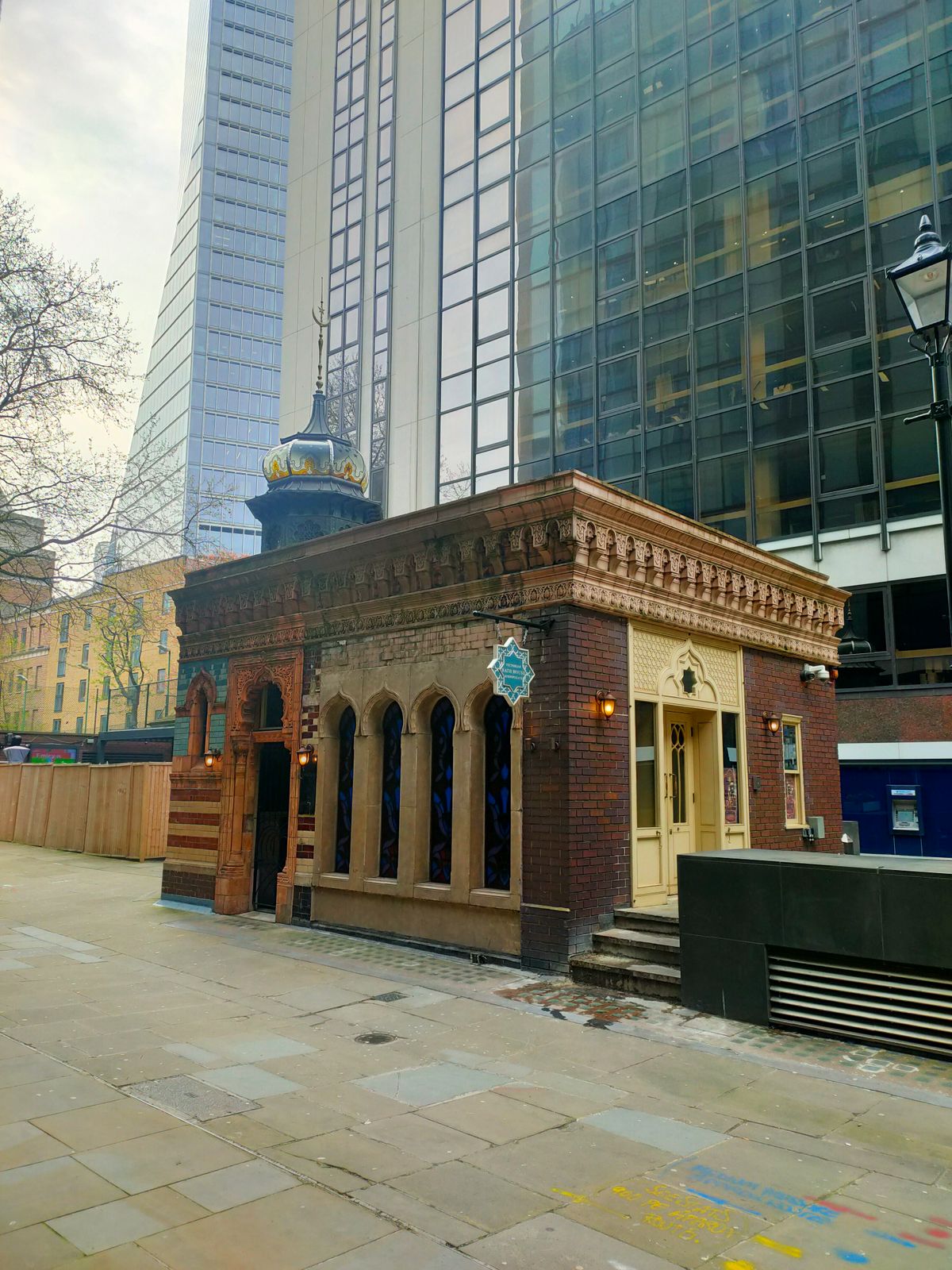About
Hidden among modern buildings, the Victorian Bath House that functioned as a Turkish bath is a unique remaining example of a flourishing pastime from a Victorian London past. It may look small from the outside at street level but most of it is located underground, having two subterranean floors. It was built to fit between the larger buildings that surrounded it at the time.
The population in Victorian London was expanding extremely rapidly. Between 1815 and 1860. The need for adequate washing facilities culminated in the Baths and Washhouses Act of 1846. This encouraged local authorities to build public baths/washhouses. Well-off residents of Victorian London wanted something a bit more upmarket and luxurious. This led to the fad for Turkish bathhouses. At the height of their popularity there were over 100 Turkish baths in London.
This bath house was originally built as an underground palace of relaxation and hygiene. Designed by architect G. Harold Elphick for Victorian entrepreneur James Forde Neville and his brother Henry, it opened in February 1895. The bath house was narrow so it could fit between two 19th-century office buildings, both now long gone.
With Turkish baths being all the rage at the time, the Bishopsgate one was a huge hit with the public, that featured marble floors, hot rooms, and mosaics. The tiles were designed by Elphick and specially made at Craven Dunnill in Shropshire.
The baths managed to survive the World War II Blitz bombings but closed in 1954. Since then, it has served a variety of uses. In the 1970s and 80s it was a Turkish-themed club. In 2016, it opened as the events venue and restaurant for up to 150 people with lots of the original features and decorations restored. The outside of the ground level building can be viewed at any time from the street level, the interior of the building operates as a private business.
Related Tags
Know Before You Go
The Victorian Bathhouse is in Bishopsgate Churchyard, next to the sign for The Ivy, close to where New Broad Street crosses Old Broad Street.
As the building is dwarfed by its surroundings in a maze of alleys, it's easiest to first find Old Broad Street and peer down the entrances below the Broadworks building.
Liverpool Street and Moorgate stations are close by, with step-free access from the Elizabeth Line. The bathhouse exterior can be viewed at any time.
Community Contributors
Added By
Published
November 1, 2022














































